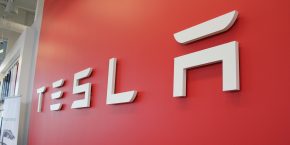
Last month, we reported on a gas company in the Netherlands claiming to have converted a Tesla Model S to a hydrogen fuel cell powertrain.
We were skeptical for a few reasons, but now they have actually unveiled the prototype.
The Holthausen Group, better known as a gas supplier, is also dabbling with hydrogen stations and fuel cell vehicles.
Stefan Holthausen, the company’s founder, announced last week at the ‘Founder Talks‘ in the city of Groningen that they have hacked a Tesla Model S to replace the battery pack with fuel cells and hydrogen tanks.
He claimed that it doubles the range of the car:
“We managed to hack a second-hand Tesla so that it can drive on hydrogen. With this we can more than double the action range.”
They claim 1,000 km (~621 miles) of range. Let’s assume that’s based on NEDC since they are in the Netherlands. Tesla’s Model S 100D has a NEDC-rated range of 632 km (393 miles).
Last month, we only saw some renders, but now they have unveiled the prototype, which they are calling ‘Helsa’ (via RTV):
They previously said that they plan to launch it soon as a 50,000-euro ($58,000) conversion package, but now, they’ve apparently changed their minds.
Max Holthausen told RTV that they don’t have production plans:
“There may be a few converted Tesla’s of partners with whom we work together, but it remains on a small-scale. The larger production will be more with larger-scale vehicles.”
The Holthausen Group emailed Tesla to show them the project, but the automaker reportedly responded: “we have seen it, and we do not comment.”
Electrek’s Take
Why? No, seriously why? Why would you ruin a perfectly good Model S with a hydrogen fuel cell system?
Holthausen said:
“I think the Tesla itself is a very nice car. With this project, I wanted to bring two worlds together, because a lot of people think that a hydrogen car can not be an electric car.”
That’s not a reason. At its core, a fuel cell vehicle is an electric vehicle like a Tesla. Instead of a battery pack feeding electricity to an electric motor, like the Model S, hydrogen is fed into fuel cells which create electricity and power an electric motor.
The only difference is that the hydrogen supply is 3x more complex and inefficient as electricity fed directly into batteries (image by 5 hour Ahead):

Now we are only talking about vehicles in general, but it’s even more stupid to take a Tesla and convert it to fuel cells. They had to remove cargo space in the back and the entire front truck to install the system.
Not only that, but it looks like they didn’t actually replace the battery pack, which makes sense since it’s used as a structural part of the vehicle. So now you are carrying both a large battery pack and hydrogen tanks to get ~200 miles of range for $50,000 and pay more per charge?
Does anyone really want that?
FTC: We use income earning auto affiliate links. More.





Comments